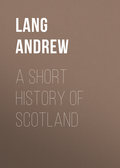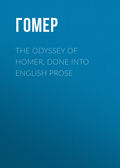
Lang Andrew
The Puzzle of Dickens's Last Plot
INTRODUCTION
Forster tells us that Dickens, in his later novels, from Bleak House onwards (1853), “assiduously cultivated” construction, “this essential of his art.” Some critics may think, that since so many of the best novels in the world “have no outline, or, if they have an outline, it is a demned outline,” elaborate construction is not absolutely “essential.” Really essential are character, “atmosphere,” humour.
But as, in the natural changes of life, and under the strain of restless and unsatisfied activity, his old buoyancy and unequalled high spirits deserted Dickens, he certainly wrote no longer in what Scott, speaking of himself, calls the manner of “hab nab at a venture.” He constructed elaborate plots, rich in secrets and surprises. He emulated the manner of Wilkie Collins, or even of Gaboriau, while he combined with some of the elements of the detective novel, or roman policier, careful study of character. Except Great Expectations, none of his later tales rivals in merit his early picaresque stories of the road, such as Pickwick and Nicholas Nickleby. “Youth will be served;” no sedulous care could compensate for the exuberance of “the first sprightly runnings.” In the early books the melodrama of the plot, the secrets of Ralph Nickleby, of Monk, of Jonas Chuzzlewit, were the least of the innumerable attractions. But Dickens was more and more drawn towards the secret that excites curiosity, and to the game of hide and seek with the reader who tried to anticipate the solution of the secret.
In April, 1869, Dickens, outworn by the strain of his American readings; of that labour achieved under painful conditions of ominously bad health – found himself, as Sir Thomas Watson reported, “on the brink of an attack of paralysis of his left side, and possibly of apoplexy.” He therefore abandoned a new series of Readings. We think of Scott’s earlier seizures of a similar kind, after which Peveril, he said, “smacked of the apoplexy.” But Dickens’s new story of The Mystery of Edwin Drood, first contemplated in July, 1869, and altered in character by the emergence of “a very curious and new idea,” early in August, does not “smack of the apoplexy.” We may think that the mannerisms of Mr. Honeythunder, the philanthropist, and of Miss Twinkleton, the schoolmistress, are not in the author’s best vein of humour. “The Billickin,” on the other hand, the lodging-house keeper, is “in very gracious fooling:” her unlooked-for sallies in skirmishes with Miss Twinkleton are rich in mirthful surprises. Mr. Grewgious may be caricatured too much, but not out of reason; and Dickens, always good at boys, presents a gamin, in Deputy, who is in not unpleasant contrast with the pathetic Jo of Bleak House. Opinions may differ as to Edwin and Rosa, but the more closely one studies Edwin, the better one thinks of that character. As far as we are allowed to see Helena Landless, the restraint which she puts on her “tigerish blood” is admirable: she is very fresh and original. The villain is all that melodrama can desire, but what we do miss, I think, is the “atmosphere” of a small cathedral town. Here there is a lack of softness and delicacy of treatment: on the other hand, the opium den is studied from the life.
On the whole, Dickens himself was perhaps most interested in his plot, his secret, his surprises, his game of hide and seek with the reader. He threw himself into the sport with zest: he spoke to his sister-in-law, Miss Hogarth, about his fear that he had not sufficiently concealed his tracks in the latest numbers. Yet, when he died in June, 1870, leaving three completed numbers still unpublished, he left his secret as a puzzle to the curious. Many efforts have been made to decipher his purpose, especially his intentions as to the hero. Was Edwin Drood killed, or did he escape?
By a coincidence, in September, 1869, Dickens was working over the late Lord Lytton’s tale for All The Year Round, “The Disappearance of John Ackland,” for the purpose of mystifying the reader as to whether Ackland was alive or dead. But he was conspicuously defunct! (All the Year Round, September-October, 1869.)
The most careful of the attempts at a reply about Edwin, a study based on deep knowledge of Dickens, is “Watched by the Dead,” by the late ingenious Mr. R. A. Proctor (1887). This book, to which I owe much aid, is now out of print. In 1905, Mr. Cuming Walters revived “the auld mysterie,” in his “Clues to Dickens’s Edwin Drood” (Chapman & Hall and Heywood, Manchester). From the solution of Mr. Walters I am obliged to dissent. Of Mr. Proctor’s theory I offer some necessary corrections, and I hope that I have unravelled some skeins which Mr. Proctor left in a state of tangle. As one read and re-read the fragment, points very dark seemed, at least, to become suddenly clear: especially one appeared to understand the meaning half-revealed and half-concealed by Jasper’s babblings under the influence of opium. He saw in his vision, “that, I never saw that before.” We may be sure that he was to see “that” in real life. We must remember that, according to Forster, “such was Dickens’s interest in things supernatural that, but for the strong restraining power of his common sense, he might have fallen into the follies of spiritualism.” His interest in such matters certainly peeps out in this novel – there are two specimens of the supernormal – and he may have gone to the limited extent which my hypothesis requires. If I am right, Dickens went further, and fared worse, in the too material premonitions of “The Signalman” in Mugby Junction.
With this brief preface, I proceed to the analysis of Dickens’s last plot. Mr. William Archer has kindly read the proof sheets and made valuable suggestions, but is responsible for none of my theories.
ANDREW LANG.
St. Andrews,
September 4, 1905.
THE STORY
Dramatis Personæ
For the discovery of Dickens’s secret in Edwin Drood it is necessary to obtain a clear view of the characters in the tale, and of their relations to each other.
About the middle of the nineteenth century there lived in Cloisterham, a cathedral city sketched from Rochester, a young University man, Mr. Bud, who had a friend Mr. Drood, one of a firm of engineers – somewhere. They were “fast friends and old college companions.” Both married young. Mr. Bud wedded a lady unnamed, by whom he was the father of one child, a daughter, Rosa Bud. Mr. Drood, whose wife’s maiden name was Jasper, had one son, Edwin Drood. Mrs. Bud was drowned in a boating accident, when her daughter, Rosa, was a child. Mr. Drood, already a widower, and the bereaved Mr. Bud “betrothed” the two children, Rosa and Edwin, and then expired, when the orphans were about seven and eleven years old. The guardian of Rosa was a lawyer, Mr. Grewgious, who had been in love with her mother. To Grewgious Mr. Bud entrusted his wife’s engagement ring, rubies and diamonds, which Grewgious was to hand over to Edwin Drood, if, when he attained his majority, he and Rosa decided to marry.
Grewgious was apparently legal agent for Edwin, while Edwin’s maternal uncle, John Jasper (aged about sixteen when the male parents died), was Edwin’s “trustee,” as well as his uncle and devoted friend. Rosa’s little fortune was an annuity producing £250 a-year: Edwin succeeded to his father’s share in an engineering firm.
When the story opens, Edwin is nearly twenty-one, and is about to proceed to Egypt, as an engineer. Rosa, at school in Cloisterham, is about seventeen; John Jasper is twenty-six. He is conductor of the Choir of the Cathedral, a “lay precentor;” he is very dark, with thick black whiskers, and, for a number of years, has been a victim to the habit of opium smoking. He began very early. He takes this drug both in his lodgings, over the gate of the Cathedral, and in a den in East London, kept by a woman nicknamed “The Princess Puffer.” This hag, we learn, has been a determined drunkard, – “I drank heaven’s-hard,” – for sixteen years before she took to opium. If she has been dealing in opium for ten years (the exact period is not stated), she has been very disreputable for twenty-six years, that is ever since John Jasper’s birth. Mr. Cuming Walters suggests that she is the mother of John Jasper, and, therefore, maternal grandmother of Edwin Drood. She detests her client, Jasper, and plays the spy on his movements, for reasons unexplained.
Jasper is secretly in love with Rosa, the fiancée of his nephew, and his own pupil in the musical art. He makes her aware of his passion, silently, and she fears and detests him, but keeps these emotions private. She is a saucy school-girl, and she and Edwin are on uncomfortable terms: she does not love him, while he perhaps does love her, but is annoyed by her manner, and by the gossip about their betrothal. “The bloom is off the plum” of their prearranged loves, he says to his friend, uncle, and confidant, Jasper, whose own concealed passion for Rosa is of a ferocious and homicidal character. Rosa is aware of this fact; “a glaze comes over his eyes,” sometimes, she says, “and he seems to wander away into a frightful sort of dream, in which he threatens most.. ” The man appears to have these frightful dreams even when he is not under opium.
Opening of the Tale
The tale opens abruptly with an opium-bred vision of the tower of Cloisterham Cathedral, beheld by Jasper as he awakens in the den of the Princess Puffer, between a Chinaman, a Lascar, and the hag herself. This Cathedral tower, thus early and emphatically introduced, is to play a great but more or less mysterious part in the romance: that is certain. Jasper, waking, makes experiments on the talk of the old woman, the Lascar and Chinaman in their sleep. He pronounces it “unintelligible,” which satisfies him that his own babble, when under opium, must be unintelligible also. He is, presumably, acquainted with the languages of the eastern coast of India, and with Chinese, otherwise, how could he hope to understand the sleepers? He is being watched by the hag, who hates him.
Jasper returns to Cloisterham, where we are introduced to the Dean, a nonentity, and to Minor Canon Crisparkle, a muscular Christian in the pink of training, a classical scholar, and a good honest fellow. Jasper gives Edwin a dinner, and gushes over “his bright boy,” a lively lad, full of chaff, but also full of confiding affection and tenderness of heart. Edwin admits that his betrothal is a bore: Jasper admits that he loathes his life; and that the church singing “often sounds to me quite devilish,” – and no wonder. After this dinner, Jasper has a “weird seizure;” “a strange film comes over Jasper’s eyes,” he “looks frightfully ill,” becomes rigid, and admits that he “has been taking opium for a pain, an agony that sometimes overcomes me.” This “agony,” we learn, is the pain of hearing Edwin speak lightly of his love, whom Jasper so furiously desires. “Take it as a warning,” Jasper says, but Edwin, puzzled, and full of confiding tenderness, does not understand.
In the next scene we meet the school-girl, Rosa, who takes a walk and has a tiff with Edwin. Sir Luke Fildes’s illustration shows Edwin as “a lad with the bloom of a lass,” with a classic profile; and a gracious head of long, thick, fair hair, long, though we learn it has just been cut. He wears a soft slouched hat, and the pea-coat of the period.






![XXXII Ballades in Blue China [1885]](https://fictionbook.ru/pub/c/cover_120/25230660.jpg)
